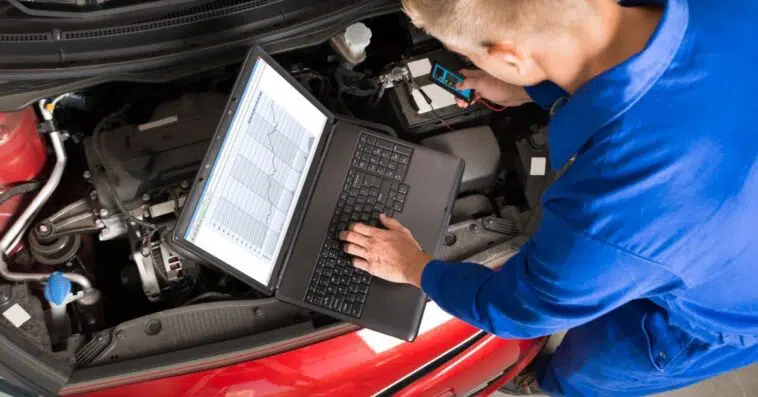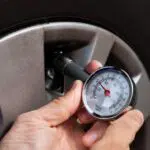Why would a person need to reset the computer of their vehicle? The most common reasons could be to pass a carbon emissions test or to clear a check engine light.
The latter does not go away automatically. You have to drive a few miles on the road for the computer to recalculate everything.
So, the question arises, how many miles to reset computer on a car? You may have to drive anywhere from 50 to 100 miles for the computer to reset itself properly. Some vehicles may even need to be driven more for the computer to reset.
There are some other things that you need to consider before you reset the computer of the vehicle. We will be discussing more than during this article.
So, without any further ado, let’s get straight into it.
TABLE OF CONTENTS
Why Reset The Computer
Before continuing with the article, many readers don’t know why someone would want to reset the computer. Let me explain. As I outlined in the introduction, there are two reasons for someone to do this.
The first one is passing carbon inspection. A vehicle has to pass a certain number of miles in an inspection without outputting any error code. The mileage should be at least 50 miles, but it varies from vehicle to vehicle.
After driving a certain number of miles, the inspection service will connect the scanner to the OBDII port to check if the engine outputted any error codes or not.
Another reason for this resetting the computer is if the engine had some issue and a light showed on the instrument panel. It might be a temporary glitch or could be a larger problem underneath.
But you need to make sure that it was not a one-time occurrence unless you are willing to pay for a potentially expensive repair that may have just been nothing.
How Many Miles To Cover
Now, let’s get on to the question that everyone has been waiting for, how many miles should be driven for a computer to clear a check engine light if there is any.
Some of you may be confused that you came looking for a computer reset. This is said in context with resetting any glitches. You should not be confused between the two.
Regardless, you have to drive at least 50 miles for any changes to become visible. Even when you get a repair, an engine will not clear the check engine light or any other one until sufficient data has been collected and processed.
The only way to do so is by driving the vehicle. If the light still has not turned off after 100 miles, the repair did not work, or there is another problem with the engine.
How To Confirm The Mileage
The only way to be sure that your vehicle has driven enough is to carry an OBDII scanner with you for the duration of the ride.
After the first 50 miles have been completed, park the vehicle and then plug the scanner into the OBDII port of the vehicle.
Each scanner has an emission menu in it. You need to get to that. There you will see one of three things:
- Ready
- Not Ready
- Not Applicable
At the 75-mile mark, you need to check and confirm if the vehicle is ready or not. If it states ready, then you may proceed with the test.
If it is still not ready, then you need to drive a bit more. For that, you need to drive an additional 25 miles. If not, then the trip should be extended to 100 miles. That should do the trick.
If the scanner says not applicable, then your engine does not have a monitoring system. In cases like these, there is nothing you can do.
My advice is that you test out the OBDII scanner once before starting the ride. It will frustrate anyone who drove 50 miles to see that their vehicle does not have the system for testing. So, you should be prepared beforehand.
Car Not Ready Even After Driving
There have been many reports of users that complained that the engine was still not ready after driving for an excess of 100 miles. This is quite an interesting scenario.
There must be some triggers that will activate the monitoring system of a vehicle. If those requirements are not reached, the OBDII scanner will say Not Ready, no matter what you do.
The first thing that you must know is that the engine must be cold started. This means that it should not have been driven for at least 6 hours. This allows the engine to cool down properly, and the testing can be done from zero.
The next thing that must be kept in mind is that the coolant temperature must be under 122-degree Fahrenheit. Even the air temperature sensor must have a reading that is within 12 degrees of the coolant temperature.
I know that many of you may find this a quite tough task. But if you want to make sure that the engine is fault-free, this is the only way to go. If you are not willing to do all this, a mechanic, with some extra cost, will be more than happy to test the vehicles for you.
Number Of Drive Cycles
Unfortunately, some vehicles do not reset after one 50-mile trip. In the case of those vehicles, the same process must be repeated three times in total. They are called drive cycles.
This is because some engines require more data from the sensors for a proper display of results. Many of you may not be up for the task of traveling anywhere from 150 miles to 300 miles in one go. That is why the drive can be divided into three drive cycles.
It is generally advised to have three drive cycles. You don’t have to start immediately. As each cycle requires the engine to be cool enough, the best way to approach this is by letting the vehicle cool down for a few hours and then continue driving.
As the temperature ranges need to be satisfied for the sensors to work, you need to give the engine sufficient time to cool down, or the drive will go to waste.
To clarify, it is not about how much you have driven. It also depends on if you satisfy the conditions that are required to reset the computer properly.
As I have clearly said in the above article, the conditions are often a must to be met. If not, then there is no point in spending and wasting time on these many drive cycles.
Reasons For The Check Engine Light To Turn On
Before you go ahead and spend all that fuel for testing, one must know what causes the check engine light to turn on. When the light suddenly comes on, there are more chances of an underlying problem than a glitch.
Some common reasons for the light turning on are:
- Failure of the oxygen sensor
- Loose fuel cap
- Failure of the catalytic converter
- Faulty ignition coils or spark plugs
- Failure of MAF sensor
As a vehicle engine is a quite complicated piece of equipment, there can be many more reasons for the check engine light to turn on without any prior indications.
The above five reasons I mentioned are some of the more common ones that have frustrated users. Apart from one, most of them require a repair or a replacement.
Ranging from misfiring and unexpected engine stoppage, the engine can cause various troubles for you. Whether it is the oxygen sensor or a faulty ignition coil, a replacement must be done as soon as possible. Without them, you are bound to run into any issues.
If the catalytic converter is damaged, leaking, or faulty, it won’t be able to convert the toxic emissions of the vehicle. In cases like that, it is recommended not to drive the vehicle at all. You should get it towed to the nearest mechanic to get the problem fixed as soon as possible.
If you did not know, carbon monoxide is one of the many gases emitted by engine combustion. Inhaling it can prove to be fatal.
The catalytic converter, as proven by its name, converts it into less harmful gases. You can also run into a detective of legal issues if you are found driving with a faulty converter.
Conclusion
I think it can finally be concluded that this article has more information than what you bargained for.
If you are one of those readers that scroll quickly, then the answer to your question is, how many miles to reset a computer on the car is that you have to drive at least 50 miles on the vehicle.
The distance may be bumped up to 100 or even more miles, but it all depends on the vehicle and the conditions you are driving in. There can be many reasons which may lead you to reset the engine.
I have detailed everything you need to know in the article above. I hope that the article may have helped you and you may have found the answer you were looking for.




